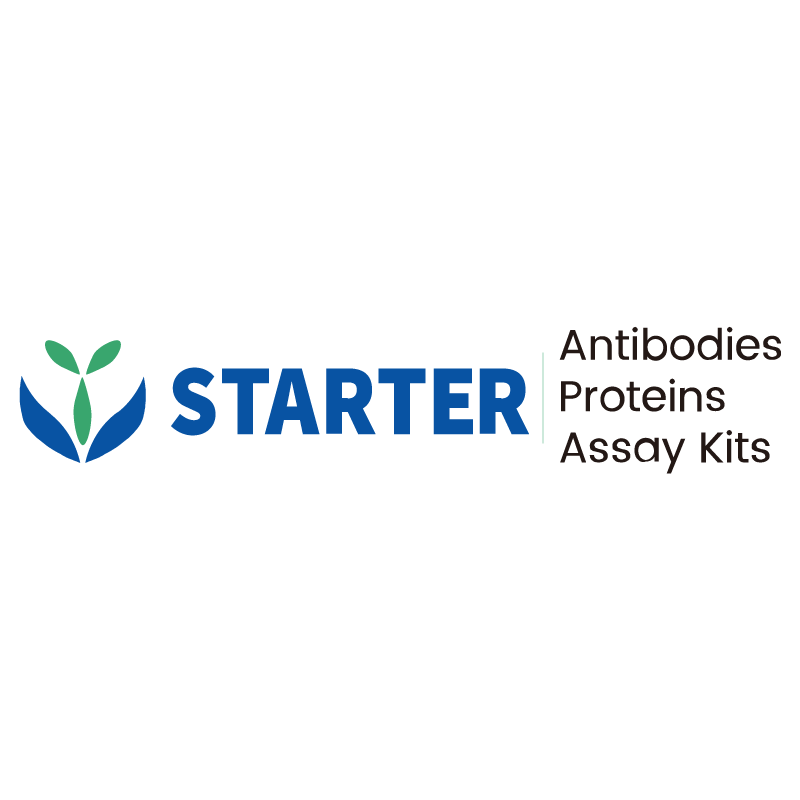WB result of ADRP/Perilipin-2 Recombinant Rabbit mAb
Primary antibody: ADRP/Perilipin-2 Recombinant Rabbit mAb at 1/1000 dilution
Lane 1: HeLa whole cell lysate 20 µg
Lane 2: HepG2 whole cell lysate 20 µg
Lane 3: 293T whole cell lysate 20 µg
Lane 4: K562 whole cell lysate 20 µg
Low expression control: HeLa whole cell lysate
Secondary antibody: Goat Anti-rabbit IgG, (H+L), HRP conjugated at 1/10000 dilution
Predicted MW: 48 kDa
Observed MW: 48 kDa
Product Details
Product Details
Product Specification
| Host | Rabbit |
| Antigen | ADRP/Perilipin-2 |
| Synonyms | Perilipin-2; Adipophilin; Adipose differentiation-related protein (ADRP); ADFP; PLIN2 |
| Immunogen | Synthetic Peptide |
| Location | Membrane |
| Accession | Q99541 |
| Clone Number | S-2210-3 |
| Antibody Type | Recombinant mAb |
| Isotype | IgG |
| Application | WB, ICC |
| Reactivity | Hu, Ms |
| Positive Sample | HepG2, 293T, K562, NIH/3T3, mouse liver |
| Predicted Reactivity | Bv, Pg |
| Purification | Protein A |
| Concentration | 0.5 mg/ml |
| Conjugation | Unconjugated |
| Physical Appearance | Liquid |
| Storage Buffer | PBS, 40% Glycerol, 0.05% BSA, 0.03% Proclin 300 |
| Stability & Storage | 12 months from date of receipt / reconstitution, -20 °C as supplied |
Dilution
| application | dilution | species |
| WB | 1:1000-1:2000 | Hu, Ms |
| ICC | 1:500 | Hu |
Background
Adipose Differentiation-Related Protein (ADRP), also known as Perilipin-2 or ADFP, is a 49 kDa lipid droplet surface protein belonging to the PAT family (which includes Perilipin, ADRP, TIP47, S3-12, and OXPAT). It plays a crucial role in lipid droplet formation, stabilization, and metabolic regulation. ADRP is expressed in various cell types, such as hepatic stellate cells, adipocytes, and macrophages, where it modulates lipid storage and release. Studies show that ADRP promotes intracellular lipid accumulation by inhibiting ATGL (adipose triglyceride lipase)-mediated lipolysis while enhancing exogenous fatty acid uptake, thereby influencing lipid droplet size and secretion. Additionally, dysregulated ADRP expression is associated with pathological conditions, including atherosclerosis, non-alcoholic fatty liver disease (NAFLD), and certain cancers. For example, ADRP is highly expressed in foam cells of atherosclerotic plaques, promoting cholesterol ester accumulation, whereas its expression is reduced in the livers of type 2 diabetic patients with fatty liver disease.
Picture
Picture
Western Blot
WB result of ADRP/Perilipin-2 Recombinant Rabbit mAb
Primary antibody: ADRP/Perilipin-2 Recombinant Rabbit mAb at 1/1000 dilution
Lane 1: NIH/3T3 whole cell lysate 20 µg
Lane 2: mouse liver lysate 20 µg
Secondary antibody: Goat Anti-rabbit IgG, (H+L), HRP conjugated at 1/10000 dilution
Predicted MW: 48 kDa
Observed MW: 48 kDa
Immunocytochemistry
ICC shows positive staining in HepG2 cells. Anti-ADRP antibody was used at 1/500 dilution (Green) and incubated overnight at 4°C. Goat polyclonal Antibody to Rabbit IgG - H&L (Alexa Fluor® 488) was used as secondary antibody at 1/1000 dilution. The cells were fixed with 100% ice-cold methanol and permeabilized with 0.1% PBS-Triton X-100. Nuclei were counterstained with DAPI (Blue). Counterstain with tubulin (Red).


